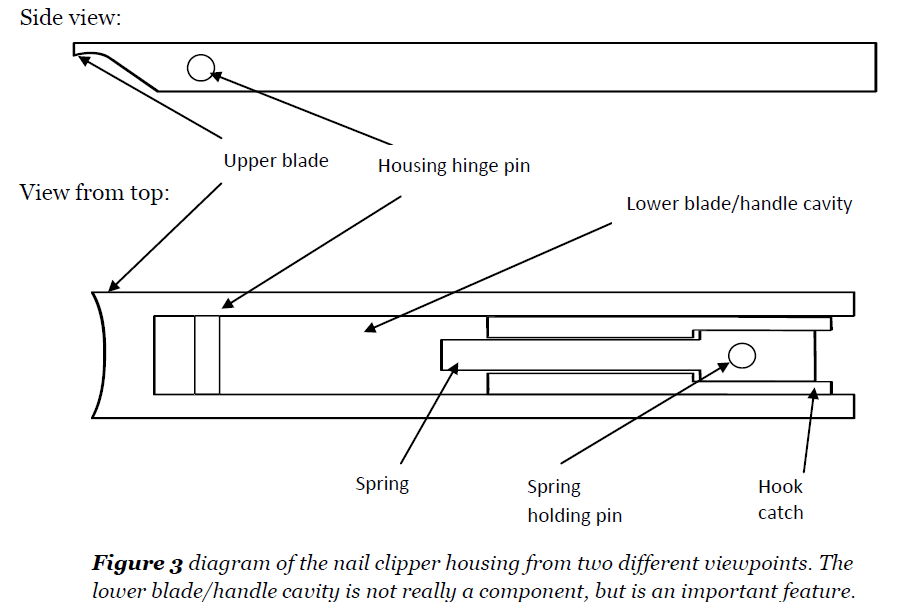QUESTION: The standard fingernail clipper is an excellent illustration
of the integral style of product architecture. The clipper system consist of
four individual components lever (A),pin (B),upper clipper arm (C),and lower
clipper arm (D). Sketch a fingernail clipper, label its four components, and
describe the functionality provided by each component.
Design a new fingernail clipper with totally modular product
architecture. Make a sketch and label
the function provided by each part. Compare the nuber of parts in this design
with the original standard nail clipper.
ZWILLING J.A. HENCKELS TWIN® BEAUTY NAIL CLIPPER
A mechanism description
By Jack Zhou
1.0 Introduction
The Zwilling J.A. Henckels TWIN Beauty nail clipper is a
brushed stainless steel fingernail trimming device. Using a jaw-like mechanism,
it is able to cleanly cut fingernails to a desired length and contour. The nail
clipper is about 2.25 inches long and 0.5 inches wide. It is unique from other
nail clippers in that it can be folded into a compact storage position (figure
2). In this position, the blades are unable to move, and the nail clipper is
only an eighth of an inch thick. The closed blades make the clipper safer to
handle, and the low height makes it easy to store. There are three main
components to the nail clipper: the housing, the lower blade, and the handle.
2.1 The housing
The housing forms most of the body of the nail clipper. It determines the length, width, and height of the clipper. The housing consists of a few components: the upper blade, the hook catches, the housing hinge pin, the spring, and the spring holding pin. They are shown below in figure 3:
The upper blade is hooked down and comes to a very sharp edge. The lower
blade comes up towards the upper blade when the tip of the nail is in between them.
The blades slice through the nail and the tip is sheared off. The front of the blade is
curved into the clipper (this is in the top view of figure 3), so that it can cut the nail to
follow the natural contour of the fingertip.
The hook catches are two metal protrusions that the hook on the back of the
handle can grab. They hold the handle down when the nail clipper is in storage mode.
The housing hinge pin is a cylindrical pin that acts as a hinge for the lower blade
to rotate around. The ends of the pin are flush against the sides of the housing.
The spring is a thin piece of stainless steel, attached to the housing only by the
spring holding pin. The steel is bent at a slight upwards angle, but is flexible and can be
pushed down. The tip of the spring is in constant contact with the spring notch of the
lower blade. The purpose of the spring is to provide an upward force against the lower
blade so that when the user releases pressure on the handle after pushing it down to
close the blades, the blades will return to their original open position. The spring is held
in place by the spring holding pin, which is just a pin that rivets the spring to the
housing.
The lower blade/handle cavity is a completely hollow area in the housing. This is
to make space for the lower blade, as well as to store the handle when the clipper is
closed.









0 comments:
Post a Comment